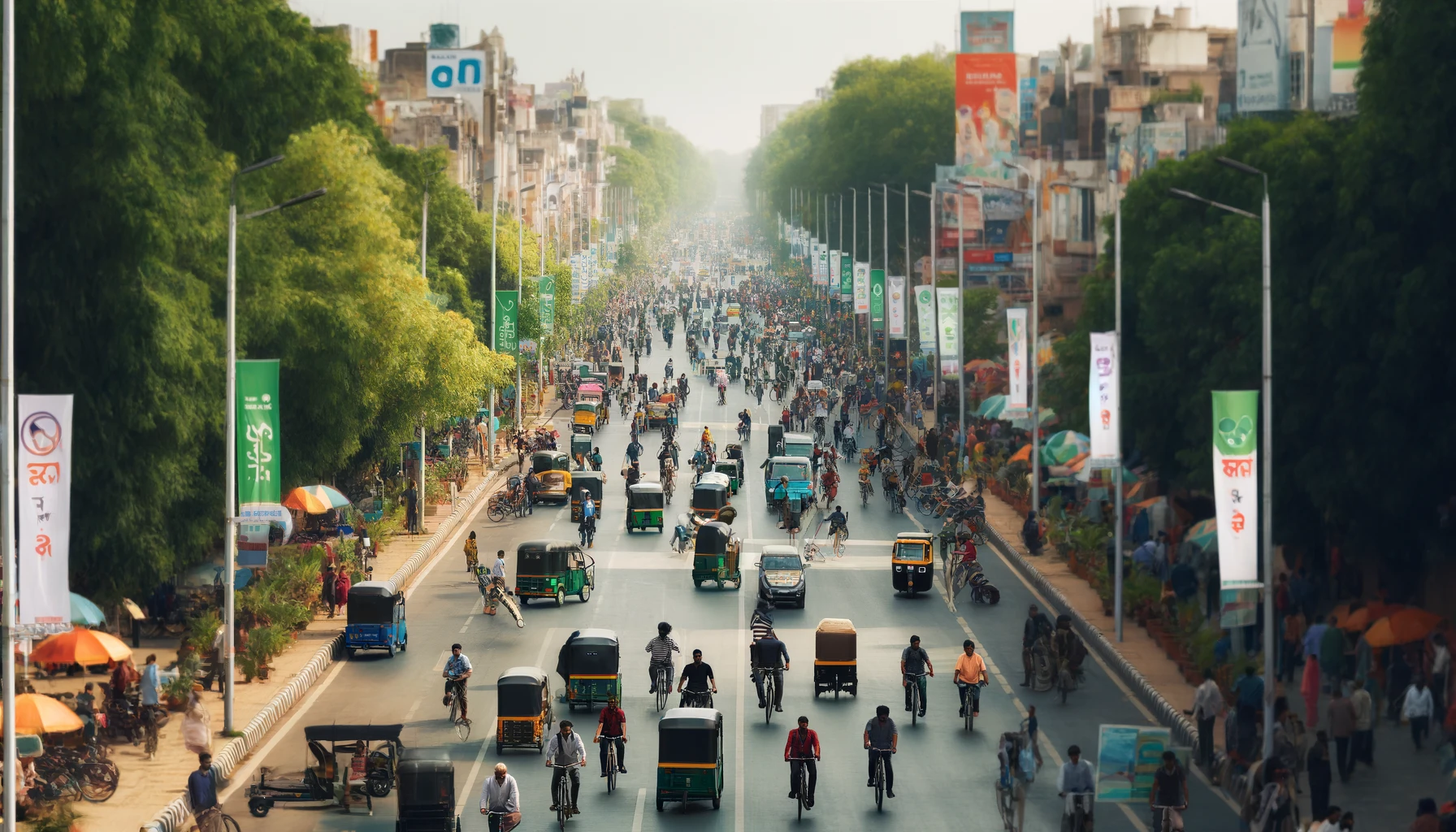Indore No Car Day 2024 – A Green Initiative for Clean Air
As cities across the globe struggle with the challenges posed by urbanization, Indore, a bustling commercial hub in Madhya Pradesh, stands out for its proactive approach to environmental sustainability. On September 22, 2024, the city observed its annual No Car Day, a symbolic yet powerful initiative aimed at tackling vehicular pollution, which accounts for a staggering 70% of the city’s air quality issues. This editorial explores the significance of the event and its broader implications for urban sustainability.
A Breath of Fresh Air
Indore’s No Car Day is not just a one-off event; it is a call to action for both the government and citizens to rethink their transportation habits. Last year’s event proved that even small changes can yield big results. The 12% reduction in cars on the road translated into savings of 80,000 liters of fuel and a significant 5.5% drop in sulfur monoxide emissions, with overall pollution levels dropping by 18%. These figures underline the fact that cleaner air is within reach if collective efforts are made. Indore has demonstrated that tackling pollution is possible, but it requires sustained participation.
The Role of Civic Leadership
Under the leadership of Mayor Pushyamitra Bhargava, the No Car Day initiative has gained significant momentum. His administration has actively promoted the use of bicycles, e-rickshaws, and public transport, making it easier for residents to leave their cars behind, even if just for a day. Bhargava’s commitment to the cause is commendable, but there is still a long way to go. Indore’s streets, which are home to over 3.38 lakh registered cars, remain congested on most days, with pollution levels frequently exceeding safe limits.
Addressing the Bigger Picture
While No Car Day is a step in the right direction, the editorial would also highlight that one day without cars is not a panacea for all of Indore’s pollution woes. Sustainable urban mobility requires systemic change. The government must continue to invest in public transport infrastructure, create more bike lanes, and ensure that electric vehicle options are accessible and affordable. Moreover, the city should explore long-term measures like carpooling incentives, congestion taxes, or even periodic car-free zones in the busiest parts of the city.
Engaging the Public
Citizen engagement is at the heart of any successful environmental initiative, and No Car Day is no exception. The editorial would call on Indore’s residents to view this day as more than just an annual event but as an opportunity to adopt more sustainable habits. The success of the day rests on the shoulders of individuals who choose bicycles over cars, thereby not only reducing pollution but also contributing to their own health and well-being. The government can only do so much; it is up to the public to embrace these eco-friendly practices year-round.
A Model for the Future
Indore’s initiative could serve as a model for other cities, both within India and globally. In a world where air quality is rapidly deteriorating and climate change is an ever-looming threat, every action counts. If more cities adopt similar programs, the cumulative impact could be transformative. The editorial would conclude by urging other municipalities to look to Indore’s example and implement their own versions of No Car Day or other eco-friendly campaigns, fostering a culture of environmental responsibility and innovation.
Conclusion
Indore’s No Car Day is a reminder that small actions can lead to significant change. However, the editorial would stress that true success will come when the principles behind this event—sustainability, responsibility, and collective action—are embraced not just for a day but for a lifetime. Only then can we hope to achieve the cleaner, greener cities that future generations deserve.
In summary, Indore’s No Car Day is a commendable initiative, one that has the potential to inspire a nationwide movement towards sustainable urban living. The road to a cleaner future is long, but with consistent effort, it is undoubtedly achievable.







